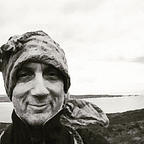Blogging Storynomics
This is the third post in an ongoing project to unpack Robert Mckee’s new book, Storynomics: Story-Driven Marketing in a Post Advertising World.
In previous posts, we’ve talked about how rational based communications, are really just rhetoric, and emotional communications, have veered into manipulation of consumers, playing on fear and envy. Which is part of the reason why marketing and advertising are in such dire straits. We’ve also touched on the elements of a story — action, reaction. changing value charges, roles, conflict, turning points, emotional dynamics.
So let’s look into Chapter Three; The Evolution of Story. As you might expect from McKee, he structures some of this material in the form of a three act drama.
Excerpt:
“…a three-act adventure that begins with the birth of consciousness. It builds as the mind battles for survival, and climaxes with the triumph of storified thought.’
Consciousness is kind of the inciting incident here. The moment when everything changes and the antagonist is thrown into a whole new world.
“We tell ourselves stories in order to live.” ~ Joan Didion
ACT I: THE FIRST HUMAN THOUGHT
Excerpt:
The silent awareness of “Me” suddenly transformed a brain into a mind and turned an animal human. Animals react to the objects around them, but the human brain turned itself into an object. Consciousness, in effect, split itself in two.
When self-awareness invaded the first human mind, it brought with it a sudden, sharp sense of isolation. The cost of self-consciousness is a life spent essentially alone, at a distance from all other living creatures, even your fellow human creatures. With that first, primordial I am, moment, the mind felt not only alone but also in terror. For self-awareness brought another, even more frightening discovery, unique to humanity. time. The first human being suddenly found herself alone and adrift on the river of time.
ACT II: THE SECOND HUMAN THOUGHT
“…What’s more, the mind discovered that not only is the future in doubt, but the surfaces of people and things cannot be trusted; that nothing is what it seems. What seems is the sensory veneer of what we see, what we hear, what people say, what people do. What is hides beneath what seems. For truth is not what happens, but how and why what happens happens. With neither science nor religion to explain life’s unseen causalities, the suddenly self-aware mind must have roiled in confusion as chaos, enigma, meaninglessness, and brevity made life unlivable. The mind had to find a way to make sense out of existence.
ACT III: THE STORY-MAKING MIND
Two pages in we get going…
Excerpt:
Because a well-told story wraps its telling around emotionally charged values, its meaning becomes marked in our memory.
Excerpt:
The form of story, at its simplest goes like this: As the telling opens, the central character’s life, as expressed in its core value (happiness/sadness, for example) is in relative balance. But then something happens that upsets this balance and decisively changes the core value’s charge one way or the other. He could for example, fall in love, (positive) or out of love (negative). The character then acts to restore life’s balance, and from that moment on a sequence of events, linked by cause and effect moves through time, progressively and dynamically swinging the core value back and forth from positive to negative, negative to positive. At climax, the story’s final event changes the core value’s charge absolutely and the character’s life returns to balance.
